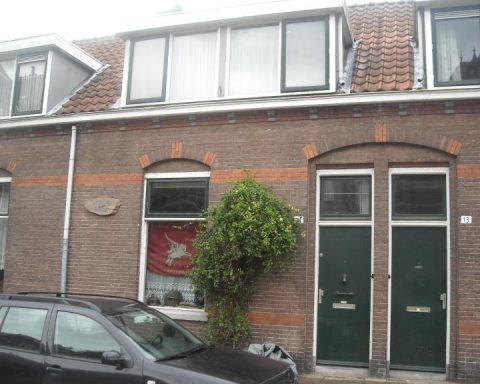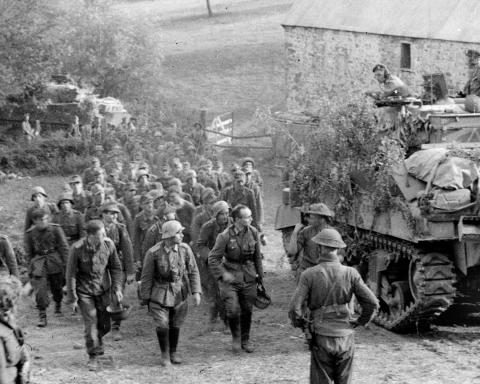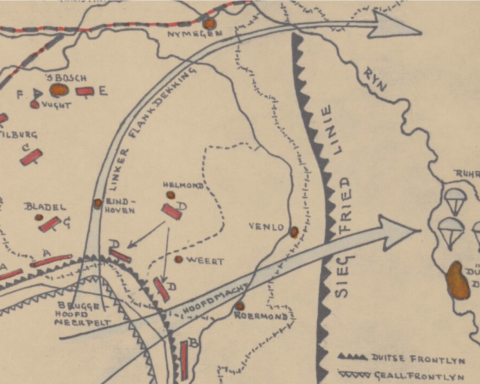“Thank God Operation Comet was called off. It would have been a disaster.” British General Shan Hackett’s assessment of Operation Comet is clear. Hackett and Polish General Stanislav Sosabowski strongly opposed the plan underlying Operation Market Garden.
‘Operation Comet’ is the name of a plan that British General Bernard Montgomery came up with on September 3, 1944. The Allied advance threatened to come to a standstill due to long supply lines.
The Allies had pushed the German army back hundreds of kilometers in August 1944. German resistance seemed to have collapsed. Now a big blow could bring the end of the war a lot closer. That idea lay behind Operation Comet and later also Operation Market Garden.
When the idea for Operation Comet arose, in the second half of August 1944, the Allied armies were still in northern France. The plan of Operation Comet was for the 1st British Airborne Division under General Urquhart and General Sosabowski’s Polish Airborne Brigade to land on top of bridges over rivers and canals in the Netherlands in a coup de main .
The bridge over the Maas near Grave and the Waal bridges near Nijmegen were already determined at an early stage of the plans. But at which bridge over the Rhine should we land? Initially no choice had been made.
“Between Arnhem and Wesel,” the plans initially stated. The bridges near Arnhem were only chosen at a later stage. This was mainly chosen because the British planners expected that the civilian population in Wesel, Germany, would cause more problems than the population of Arnhem.
In the plans for Operation Comet, British ground troops would enter the Netherlands from the south and advance north as quickly as possible via the bridges secured by the airborne troops. In this way the feared German Siegfried Line was bypassed, and the door to Berlin was open.
“Easy peasy lemon squeezy.” This is how the plan was presented. We do that right away.

Massacre
Urquhart’s 10,000 airborne soldiers and Sosabowski’s 1,500 Poles would be parachuted into five locations and hold off German counterattacks until the ground troops arrived. According to Urquhart and Sosabowski, they had far too few soldiers at their disposal to successfully carry out that task.
The two airborne generals could not get over the fact that the presence of German soldiers had not actually been taken into account in these plans. “Naive,” Urquhart called the plan.
Urquhart: “We became increasingly aware that the Germans’ response had not been taken into account at all.”
“But the Germans, General: the Germans,” according to Urquhart, Sosabowski exclaimed in despair during the presentation of the plans to General Boy Browning, who headed the Allied airborne army.
According to the Polish general, Operation Comet was a suicide mission. Sosabowski was not alone in that opinion. Colonel John Frost, for example, had already warned his soldiers that Operation Comet would be a bloodbath.
Sixteenth plan
Despite all objections, preparations for Operation Comet continued as usual. Despite the sharp criticism, the planners of the British army staff did not listen to the warnings. Urquhart’s 1st Airborne Division hoped that the plan would be canceled, just as a number of other plans had previously been canceled where the 1st Airborne Division would be deployed.
Operation Comet was already the sixteenth plan for the 1st Airborne Division. All previous plans were canceled before they were implemented.
Urquhart: “One operational plan had not yet been developed before a new plan was introduced. We often felt frustrated. But I was also sometimes relieved when a plan didn’t go through.”
Many of the plans had been canceled at the last minute because the ground forces had already reached the target. Operation Comet was also canceled, albeit at an extremely late stage.
Operation Comet was about to begin. All units had already received their orders. Planes were already loaded. In the Netherlands, Bomber Command had carried out heavy bombing of airfields with 675 bombers to prevent German air attacks against the paratroopers.
German resistance
What generals Hackett, Sosabowski and Urquhart could not achieve, British general Miles Dempsey did. Dempsey managed to convince Montgomery to call off Operation Comet just before the start of the operation.
Dempsey was commander of the Second British Army. He had just liberated both Brussels and Antwerp. During a meeting between Montgomery and Dempsey intended to discuss the attack plans for the ground army led by General Dempsey, General Dempsey told Montgomery that the Germans now had a strong defensive line along the Albert Canal. Dempsey explained to Montgomery that it would take him much longer than anticipated to break through the strong German line towards the airborne troops in Eindhoven, Nijmegen and Arnhem.
This would mean that the airborne troops would have to hold out on their own for much longer. Even Montgomery saw on September 10, 1944 that this was not a feasible option. Four hours before Operation Comet was to begin, the plan was scrapped.
The hand of Field Marshal Walter Model was now visible on the German side of the front. After the collapse of the German front in Normandy in early August 1944, Model was appointed by Hitler as commander of Army Group B. Field Marshal Model led all German troops between the North Sea coast and Northern France, including all German troops in The Netherlands.
As an aside: Walter Model chose a remarkable place for his headquarters when he was appointed on August 17, 1944. Model chose hotel De Tafelberg in Oosterbeek. Exactly a month later, Model had to leave his headquarters in a hurry when the British paratroopers landed four kilometers from his headquarters.
Table Mountain was used by the British as an emergency hospital during the Battle of Arnhem.
Model was a brilliant commander known for his organizational talent and ability to improvise. Model’s main task was to get the German defenses back in order as quickly as possible. By the second week of September, Model had restored most of the chaos on the German side.
Opposite the British army on the Belgian-Dutch border, there was a German defense line at that time that was not easy to defeat.
Postponement, not cancellation
Despite the cancellation of Operation Comet, Montgomery was given the space by Commander-in-Chief General Dwight Eisenhower to come up with a new plan.
Montgomery didn’t need much time for that. That same day, September 10, 1944, a first version of Operation Market Garden was presented. Instead of one and a half airborne divisions, as in Operation Comet, no less than four complete airborne divisions with elite Allied troops were now deployed.
In addition to the (reinforced) 1st British Airborne Division, which would land near Arnhem together with the Polish Airborne Brigade, the 82nd American Airborne Division would land near Nijmegen. The 101st Airborne Division would land at Grave and Eindhoven.
The British XXX Corps, led by General Horrocks, would advance to Arnhem on the ground.






